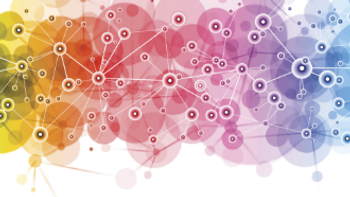
How Spectroscopy and Science are Reshaping Gemology
A historical and technical overview from the Gemological Institute of America (GIA) explores how advanced scientific instruments—particularly spectroscopic methods—have transformed gem identification. From refractometers to modern spectrophotometers, this deep dive highlights the evolving challenges and solutions in gem testing.
From Jeweler’s Loupe to Spectrometer
In a recent issue of Gems & Gemology, gemologist James E. Shigley of the Gemological Institute of America (GIA) in Carlsbad, California, presents a compelling chronicle of how analytical techniques have modernized gemology. Once a field dependent on visual inspection and rudimentary tools, gemology now employs cutting-edge scientific instrumentation to tackle increasingly complex gem identification and authentication challenges (1).
The article, titled Analytical Techniques in Gemology: A Historical Overview, leads a special issue dedicated to the technologies GIA uses for gem testing. Shigley emphasizes that the article, while excluding instruments developed solely for diamond grading, focuses on equipment that enables accurate and non-destructive analysis of a wide range of gem materials (1).
A Century of Progress
GIA's use of scientific instruments began shortly after its founding in 1931. Early efforts mirrored innovations from the mineralogical sciences and were motivated by the need for gem-specific tools. In the 1930s, GIA began promoting and teaching the use of instruments like the microscope, hand spectroscope, refractometer, and dichroscope. These tools were often modified to suit the unique requirements of gem testing, such as illumination techniques for microscopes.
By 1938, GIA was manufacturing specialized tools, including the first commercially available stereomicroscope with darkfield illumination. This innovation marked a significant shift from visual examination toward instrument-based analysis. The launch of the GIA Gem Trade Laboratory in New York in 1949 and the introduction of diamond grading reports in 1955 further cemented the central role of instrumentation in gem analysis (1).
Scientific Tools for Modern Challenges
Shigley outlines how GIA’s laboratories have adapted instrumentation to keep pace with advances in gem synthesis and treatment. New synthetic methods and multistep treatments have made visual identification increasingly unreliable. Instruments must now offer high sensitivity, rapid analysis, and sample compatibility without causing damage to valuable gemstones.
For instance, gems must be easily positioned within a spectrometer, and sometimes light delivery systems, like flexible optical cables, are needed to collect data efficiently. Instruments must also accommodate high throughput, given the volume of submissions in GIA's labs.
Shigley notes that collecting and storing this analytical data in searchable databases, especially from known natural, synthetic, or treated stones, is vital for maintaining identification accuracy over time (1–3).
The Role of Spectroscopy in Gemology
Among the most powerful tools in the gemologist’s toolkit is spectroscopy. Shigley describes spectroscopy as the study of how light interacts with matter, whether through absorption, transmission, or emission. Spectral analysis enables the identification of elements and defects responsible for a gem’s color and optical properties (1–3).
The hand spectroscope, once a standard tool for visual inspection of absorption bands, has evolved into the digital spectrophotometer, which provides a detailed graphical output. These instruments can analyze visible, ultraviolet, and infrared light, crucial for detecting subtle features in treated or synthetic gems (1).
However, spectroscopy is not without challenges. The facet arrangement of a gemstone can interfere with light transmission, and most stones are not flat, making accurate light path measurements difficult. Even so, spectroscopy remains one of the most rapid and non-destructive techniques available, typically requiring only seconds per gem (1–3).
Future-Proofing Gemology
Looking forward, Shigley outlines key trends likely to shape the future of gem testing. Synthetic gemstones will remain prevalent, though new varieties are unlikely. Treatments will grow more sophisticated and harder to detect, and even surface coatings may see a resurgence. Moreover, transparent materials like polycrystalline ceramics could momentarily confuse consumers and labs alike (1).
Another enduring challenge is determining a gem’s country of origin. While GIA has made strides with colored stones, origin determination for diamonds remains elusive.
Ultimately, modern gemological labs face not only scientific hurdles but also logistical ones: costly instrumentation, data management, and operator training. As Shigley notes, organizations like the University of Arizona’s RRUFF (named in honor of R. R. Ruff) project are pioneering open-access databases, but much of the high-quality gem data remains siloed in proprietary lab archives (1).
References
(1) Shigley, J. E. Analytical Techniques in Gemology: A Historical Overview. Gems Gemol. 2024, 60 (4). Available at:
(2) Breeding, C. M.; Ahline, N. J. Infrared Spectroscopy and Its Use in Gemology. Gems Gemol. 2024, 60 (4), 474–492. DOI:
(3) Filhol, J. S.; Rouessac, F.; Dalverny, A. L.; Schott-Leyral, G.; Bernaud, L. An Undergraduate’s Journey in Creating Lab-Made Gemstones: Nanoscale to Macroscale Synthesis of Rubies and Sapphires. J. Chem. Educ. 2024, 101 (12), 5468–5475. DOI:
Newsletter
Get essential updates on the latest spectroscopy technologies, regulatory standards, and best practices—subscribe today to Spectroscopy.





